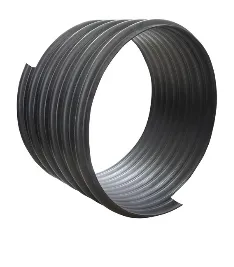ნოე . 28, 2024 14:21 სიაში დაბრუნება
Common Welding Rod Defects and How to Avoid Them
Achieving high-quality welds is essential in industries ranging from construction to automotive manufacturing. However, welders often encounter various defects that can compromise the strength, durability, and appearance of the final product.

Understanding Porosity in Welding Rod PVC Applications
Porosity is one of the most common defects in welding, where small holes or voids form within the weld. When working with welding rod PVC materials, porosity can arise from contaminants like oil, moisture, or dirt on the rod or base material. This defect not only weakens the weld but also makes it more susceptible to corrosion over time, which can be problematic in outdoor or exposed applications.
To minimize porosity, always ensure that the PVC welding rod and base material are clean and dry. Using proper storage methods to keep welding rods free from moisture is essential, especially for PVC plastic welding rods that are more sensitive to contaminants. Furthermore, maintaining optimal shielding gas flow (in cases of gas-assisted welding processes) helps prevent atmospheric contaminants from compromising the weld.
Preventing Cracking with PVC Plastic Welding Rod Techniques
Cracking is a serious welding defect that affects the weld’s structural integrity. It often occurs due to rapid cooling, improper heating, or incorrect welding speeds. This defect is particularly concerning when using PVC plastic welding rod because PVC is a thermoplastic material that can crack under stress if not handled correctly.
To avoid cracking, it’s crucial to maintain the correct heat settings for PVC plastic welding rods. Preheating the base material, especially when working with thicker pieces, can also help reduce the risk of rapid cooling that leads to cracks. Using a steady, consistent welding speed ensures even heat distribution and prevents thermal stresses that can cause the material to fracture.
Addressing Improper Fusion in PP Welding Rod Applications
Another common defect in welding is improper fusion, where the welding materials do not fully bond, resulting in weak or incomplete welds. This can be an issue with PP შედუღების ჯოხი and other thermoplastic rods, as these materials require precise heat control to achieve proper fusion.
To overcome improper fusion, make sure the PP შედუღების ჯოხი is heated to the correct melting point and that it is adequately pressed against the base material. Insufficient heat or pressure can prevent the materials from fusing properly, leading to weak bonds. Regularly inspecting the weld for signs of incomplete fusion, such as visible gaps or weak spots, can help address issues early before they compromise the project.
Minimizing Distortion with HDPE Welding Rod in Structural Applications
Distortion in welded materials occurs when uneven heating or cooling causes the material to warp. This is a common issue when working with HDPE შედუღების ღერო in structural applications where precision and stability are critical. HDPE, or high-density polyethylene, is known for its durability, but it can still distort if subjected to improper welding techniques.
One way to avoid distortion when using an HDPE შედუღების ღერო is to apply balanced heat distribution across the weld area. Clamping down the workpiece securely can also help prevent it from moving or warping during the welding process. Additionally, using a controlled cooling method, such as allowing the weld to cool gradually, helps avoid the internal stresses that lead to distortion.
Avoiding Contamination with Proper Welding Rod Storage and Handling
Contamination in welding often stems from improper storage and handling of welding rods, especially with sensitive materials like PVC welding rod და HDPE შედუღების ღერო. Contaminants such as dust, oil, and moisture can affect the quality of the weld, leading to defects such as porosity, incomplete fusion, and cracking. These issues are especially problematic in applications requiring high-strength and durability, as they can weaken the final weld.
To prevent contamination, always store PVC welding rods and other plastic rods in a clean, dry environment, away from moisture and dust. Handling them with clean gloves and ensuring the workspace is free from oils or other potential contaminants can significantly improve weld quality. For outdoor storage, sealed containers are advisable to protect the rods from humidity and temperature fluctuations.
Each of these issues requires a specific approach depending on the material, application, and environmental conditions. By maintaining high standards in welding practices and using appropriate techniques tailored to each material type, welders can produce high-quality welds that meet the demands of heavy-duty applications.
-
Welding Rods: The Backbone of Plastic Welding Applications
სიახლეებიJun.06,2025
-
PVC Sheet: A Versatile Material for Modern Construction and Design
სიახლეებიJun.06,2025
-
PVC Rod: A Reliable and Versatile Material for Industrial Applications
სიახლეებიJun.06,2025
-
Pipe Fittings: Essential Components for Secure and Efficient Plumbing Systems
სიახლეებიJun.06,2025
-
HDPE Sheet: Durable, Versatile, and Eco-Friendly Plastic for All Applications
სიახლეებიJun.06,2025
-
HDPE Pipe Solutions: Durable, Versatile, and Built to Last
სიახლეებიJun.06,2025

